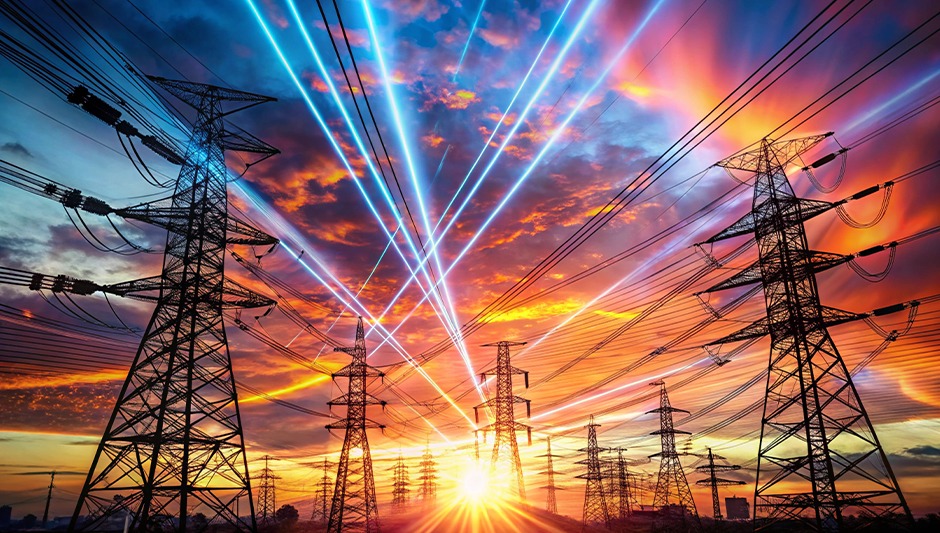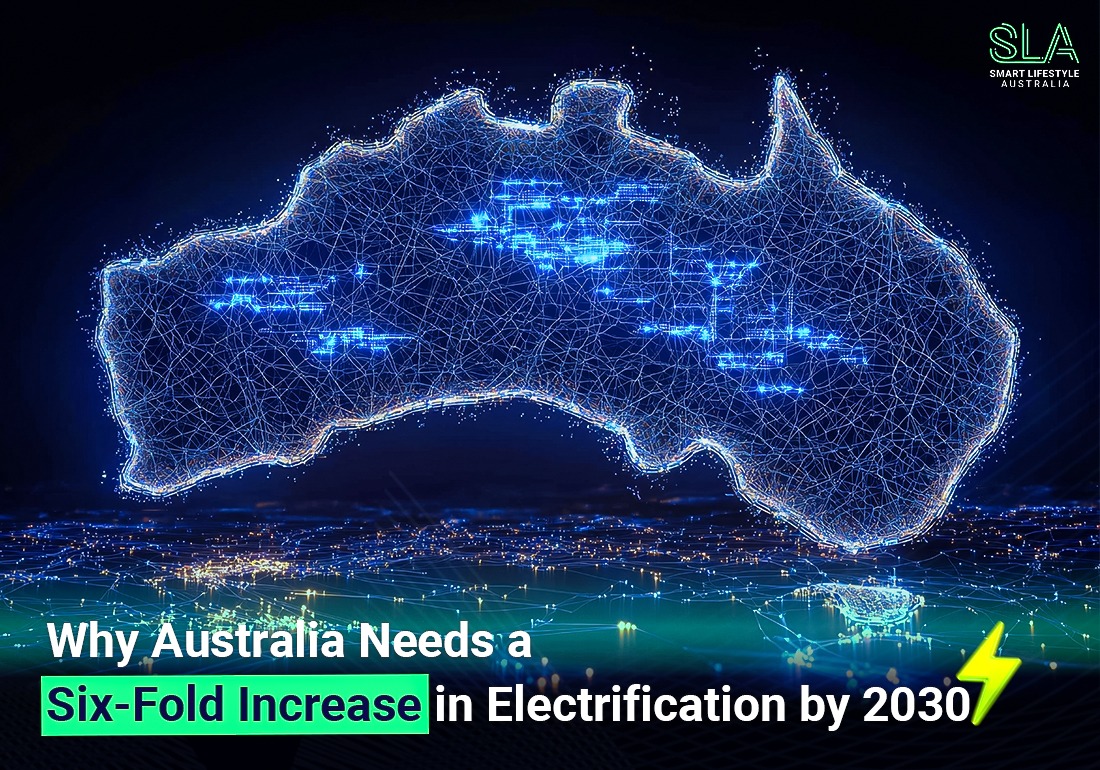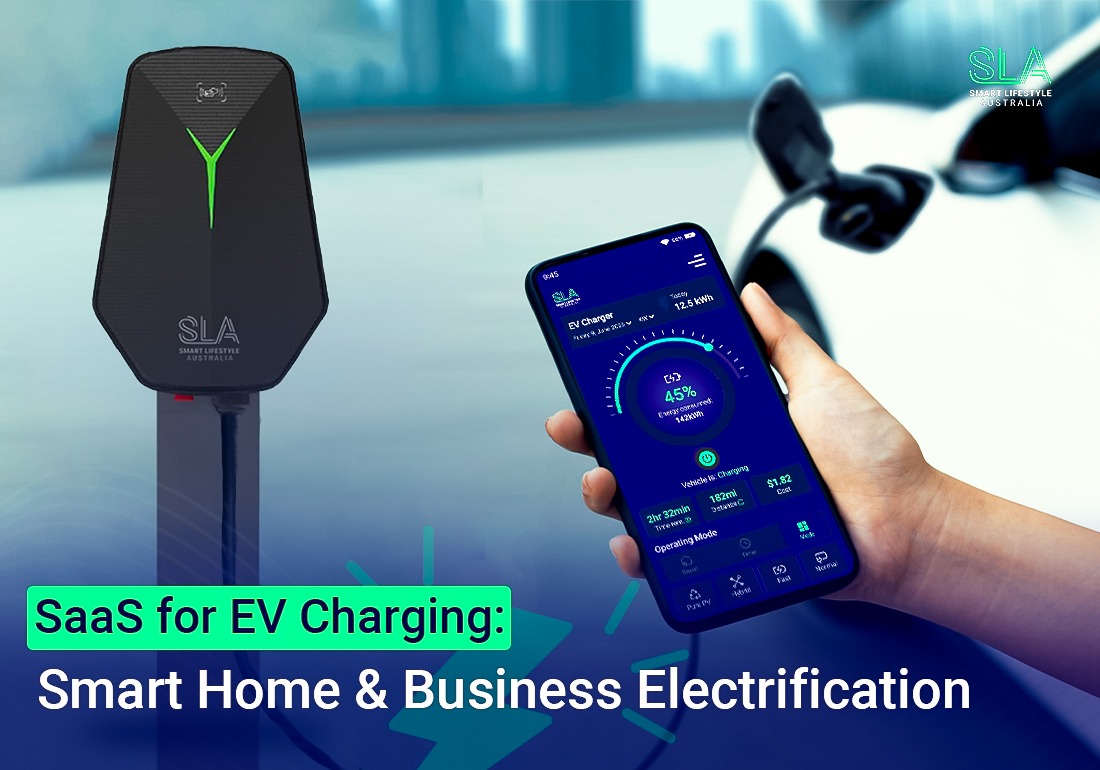Australia is moving towards a clean energy future. The country has set targets to cut emissions and reach net zero, but the progress is too slow.
And to meet climate goals, Australia’s renewable energy growth must be paired with a six-fold increase in electrification.
Electrification refers to the replacement of fossil fuel systems with clean, electric ones. You can think of electric cars instead of petrol cars or heat pumps instead of gas heaters. Even induction cooktops instead of gas stoves.
The need for change is urgent and essential. Without faster action, Australia will miss climate targets, energy costs will climb, and households will bear the pressure.
The solution is simple: Australia’s electrification must speed up. And how to do that for now? SLA is here to provide the best electrified solutions at your door!
This blog looks at why Australia needs a six-fold increase in electrification by 2030. And what does that mean for the nation’s future? First, let’s take a closer look at what electrification really means.
In this blog post:
- What Electrification Means for Australia
- Why a Six-Fold Increase is Needed
- Why Speeding Up Electrification is a Smart Move
- Challenges Australia Must Overcome
- What Happens If Australia Falls Behind
- How Can Australia Achieve It?
- Case Study: Solar and Battery Growth in Australia
- The Global Race to Electrify
- Future of Energy in Australia
- Wrapping Up: A Smarter, Cleaner Future
What Electrification Means for Australia

Electrification is simple in concept. It means switching from fossil fuels, such as gas, coal, and oil, to electricity powered by renewable sources. This change affects almost every part of daily life.
- Transport : Cars, buses, and trucks move from petrol or diesel to electric.
- Heating and cooling : Homes use electric hot water heat pumps instead of gas systems.
- Cooking : Families use induction cooktops instead of gas stoves.
- Industry : Factories run machines with electricity instead of fossil fuels.
Australia is in a good position for this transition, and the country has strong solar and wind resources. Renewable energy is already cheaper than fossil fuel power. By linking electrification with renewable growth, households and businesses can save money and cut emissions.
Why a Six-Fold Increase is Needed
At the current pace, Australia cannot reach its 2030 climate targets because existing systems are moving too slowly. Electrification in Australia must be scaled up six times faster.
The reason is clear: transport, heating, and cooking together create a large share of emissions.
Cars on petrol and homes on gas keep pumping carbon into the atmosphere. Coal fired power also continues to play a big role in emissions, making the switch to clean energy even more urgent.
A six-fold increase is not just a number; it shows the scale of the challenge ahead. Electrifying at today’s pace would keep emissions high and push Australia off track from its net-zero goals.
As the world is moving fast, Australia must act now or risk falling behind.
Why Speeding Up Electrification is a Smart Move
Let us find out some benefits of accelerated electrification:
Lower Household Bills
Electric systems powered by renewable energy are more cost-effective in the long run. A household with rooftop solar and a heat pump spends far less on energy each year. Electric cars also cost less to run than petrol cars.
Energy Independence
Australia currently relies on imported oil and gas. Electrification shifts this dependence to local renewable sources. This strengthens national energy security.
Healthier Communities
Gas appliances release harmful indoor air pollution. Petrol and diesel vehicles worsen outdoor air quality. Electrification reduces these risks and creates healthier homes and cities.
Job Creation and New Industries
The clean energy sector creates thousands of jobs. From solar panel installation to EV charging stations, electrification supports economic growth. New industries also emerge around battery storage and green technology.
Challenges Australia Must Overcome

Australia’s shift to clean energy brings big opportunities, but it also comes with challenges that need effective approaches.
Upgrading the Grid
The electricity grid must expand and modernise. A surge in electric vehicles and hot water heat pumps will increase demand. A stronger grid ensures a reliable supply.
Affordable Access
Not every household can afford an EV or heat pump right away. Government incentives and rebates are needed. Finance options can also help families make the switch.
Policy Support
Policy plays a big role in the clean energy transition. Strong targets and consistent rules give businesses the confidence to invest. Clear support also guides households in their choices.
Public Awareness
Many Australians still do not know the benefits of electrification. Education campaigns can highlight cost savings, health benefits, and the impact on the climate.
What Happens If Australia Falls Behind
If electrification does not speed up, Australia faces serious risks.
- Missed climate goals : Net-zero targets will slip out of reach.
- Higher costs : Households will continue to pay more for petrol and gas.
- Lost competitiveness : Other countries will advance in clean industries, leaving Australia behind.
- Continued fossil fuel dependence : This makes the economy vulnerable to global price shocks.
The cost of delay is high. Every year without action adds pressure on future targets. It also raises the risk of deeper climate impacts.
How Can Australia Achieve It?
Reaching a fully electrified future in Australia will take action from every level of society, including government, businesses, households, and communities.
Government Action
The government can lead with clear policies and incentives. Rebates for EVs, support for heat pumps, and investment in renewable energy are essential. Strong building standards can also push new homes towards full electrification.
Business Investment
Businesses play a key role in clean energy growth. Investment in battery storage, EV charging networks, and renewable generation drives change. Companies can also electrify their own fleets and operations.
Households Making the Switch
Families can adopt solar panels, home batteries, heat pump hot water systems, and EVs. Even small steps, like choosing induction cooktops, make a big difference. Each switch cuts emissions and lowers energy costs.
Community Action
Local communities can create shared solar and battery projects. Councils can also support charging stations and electrified public transport. Collective action adds scale and speed to the transition.
Case Study: Solar and Battery Growth in Australia
Australia already leads in rooftop solar, with millions of homes now equipped with panels. The next big step is pairing these systems with home battery storage.
This addition allows a solar system to cover most of a household’s energy needs. When linked with electrified appliances, the savings and benefits grow even further.
This progress shows what is possible. If similar growth occurs with EVs and electric hot water heat pumps, a six-fold increase in electrification is well within reach.
The key lies in joining these systems together. Solar panels power the home, batteries store excess energy, EVs and appliances run on clean electricity.
The Global Race to Electrify
Countries around the world are moving fast. Norway is leading in electric vehicles, Europe is phasing out gas boilers, and the United States is investing billions in clean energy.
Australia also has the resources to be a leader, but it must act quickly. Falling behind would mean losing opportunities in technology, jobs, and trade. The global shift is not slowing down, and Australia’s place depends on bold action now.
Future of Energy in Australia

Australia’s energy future is electric. Homes will run on solar, batteries, and efficient systems, while EVs transform transport and industry shifts to renewable power.
It’s a future that is cleaner, cheaper, and more secure, but it depends on strong commitment today. Achieving it requires nothing less than a six-fold increase in electrification.
Wrapping Up: A Smarter, Cleaner Future
Electrification in Australia is more than a climate strategy. It is a path to lower bills, healthier communities, and stronger energy security. But the shift must be fast.
Accelerating electrification nationwide is essential for reducing carbon footprints and meeting climate goals.
A six-fold increase by 2030 is not optional, but it is necessary. Without it, Australia risks missing climate targets and falling behind the world.
With decisive action, however, the country can lead in clean energy, create jobs, and protect the planet.
The choice is clear: Australia must accelerate electrification now.
Visit SLA or Cyanergy for a brighter, cleaner future that is within reach. But it will only become a reality if action is taken today.





